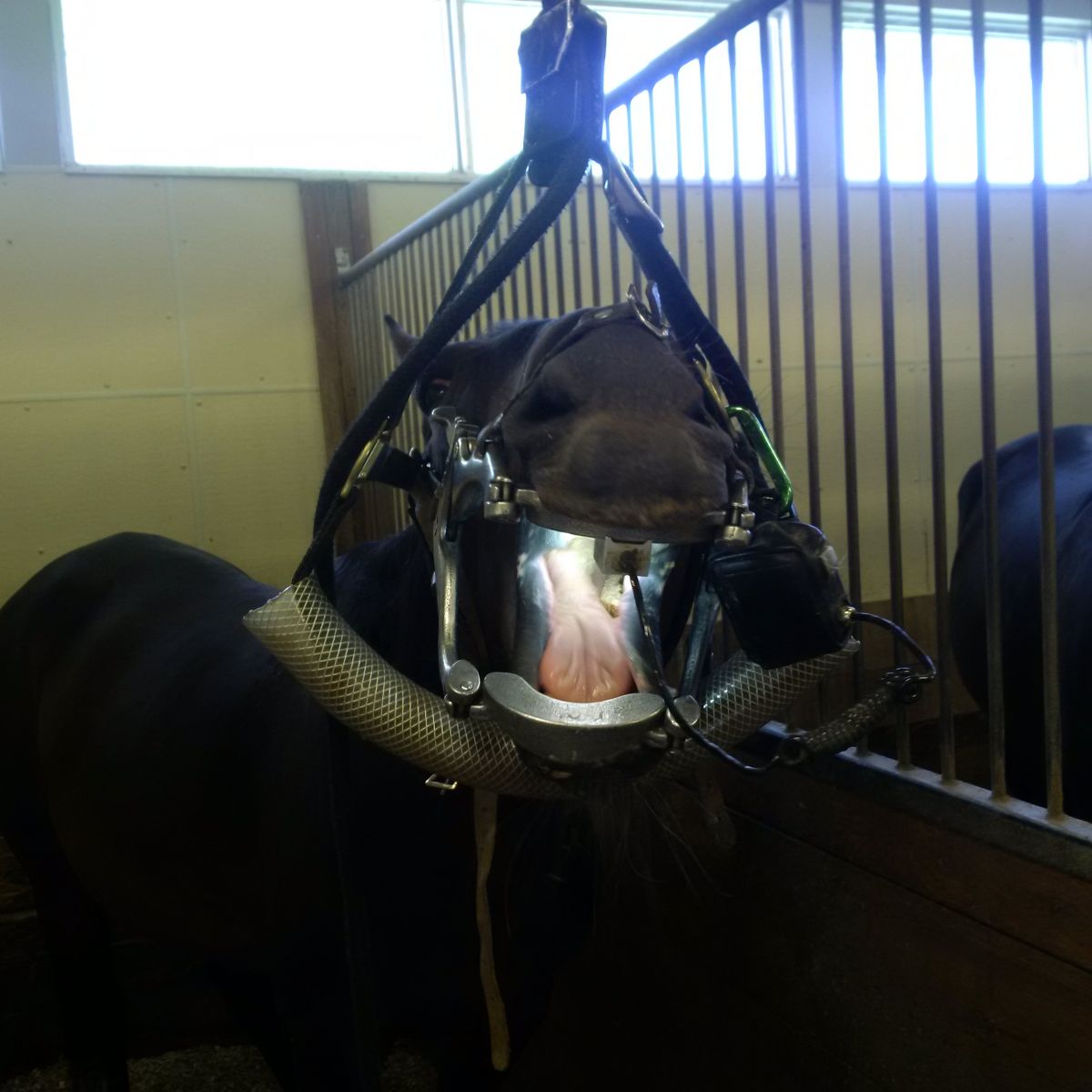Another week on the large animal service has made this small animal girl realize that large animal medicine can be A LOT of fun! I got to experience what it is like to act as an equine dentist for the day and use some pretty neat tools – but, before I get into the fun stuff, a quick lesson on horse teeth.
Horses have 40-42 adult teeth but the neat thing is that the teeth along the sides of their mouth (perfectly named “cheek” teeth) continue to grow until six to eight years of age. These teeth are worn down throughout a horse’s life via the mechanics of grinding food pieces into digestible particles. As a horse chews, depending on how the teeth are aligned, sharp points can form on the outer surfaces which can become painful. The hooks form on the cheek side of the maxillary (upper) teeth and the tongue side for the mandibular (lower) teeth. Every horse is different as far as where the points/hooks form as well as how long they can wait in between treatments.
So what does all this information have to do with what I spent my day doing? Well I’m glad you asked, because I got to help grind down those sharp hooks on 12 horses so that they can chew more comfortably! This procedure is known in the horse world as “floating teeth”.
In order to ensure that our patients were cooperative and free from any discomfort, each horse was given a combination of sedatives and pain medications. Once everyone was feeling much more relaxed, we inserted a metal mouth gag that keeps the mouth open. You may not know this but when a horse is sedated their head’s tend to droop very low to the ground, so we sling them into a headrest contraption to keep their heads at a level that is perfect to float their teeth.
 This is one of my patients once she was all set up for her floating.
This is one of my patients once she was all set up for her floating.
The really neat part for me was getting to use the awesome power tools – yes that’s right, I got to use power tools. As equine medicine has advanced, new and more efficient tools are always being put on the market and the addition of a battery operated option for floating teeth is wonderful. With this machine, I was able to get into all the nooks and crannies of the horse mouth to file away every sharp point. It took me a while to get used to handling the equipment, but once you get the hang of it then it’s actually quite fun! I also got to see what the vets at Paris Veterinary Clinic used to use to float teeth prior to the power float – the manual float looks like a giant tooth brush with shards of rock for bristles.


I had a ton of fun getting to play dentist for the day and all of our patients can now chew more comfortably! Who knew this small animal girl could have so much fun working with horses?
Can’t believe my eight weeks are almost up – stay turned for some of my final adventures!
(Photo on left shows a power float; photo on right is a manual float)
